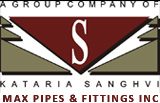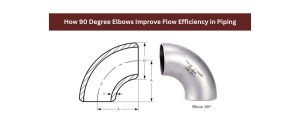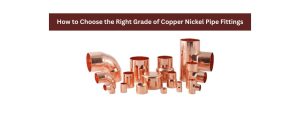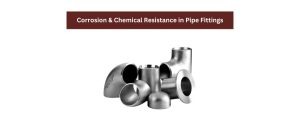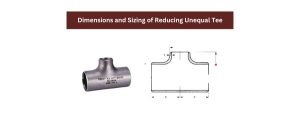In piping systems, elbows are essential fittings used to change the flow direction of fluids or gases. 180 Degree Elbows are particularly crucial in applications where a complete reversal of flow is required. These fittings are used in industries like oil & gas, chemical processing, power plants, and HVAC systems. To ensure safety, efficiency, and durability, 180 Degree Elbows must comply with international standards and specifications. In this blog, we will explore the key standards, material grades, manufacturing specifications, and testing requirements for these critical piping components.
Key International Standards for 180 Degree Elbows
The manufacturing and application of 180 Degree Elbows are governed by various international standards that ensure quality and compatibility. Below are some of the most widely followed standards:
ASME (American Society of Mechanical Engineers) Standards
- ASME B16.9 – Covers factory-made wrought steel buttweld fittings, including 180-degree elbows.
- ASME B16.28 – Standard for short-radius elbows and returns.
- ASME B31.3 – Specifies process piping requirements.
ANSI (American National Standards Institute)
- ANSI standards complement ASME specifications to ensure dimensional consistency and performance reliability.
ASTM (American Society for Testing and Materials) Specifications
- ASTM A234 – Standard for carbon and alloy steel buttweld fittings.
- ASTM A403 – Covers stainless steel fittings.
- ASTM A815 – Specifies duplex and super duplex steel fittings.
- ASTM A420 – Standard for low-temperature steel pipe fittings.
ISO (International Organization for Standardization)
- ISO 15590-1 – Covers induction bends, elbows, and other fittings for the petroleum and natural gas industries.
- ISO 3419 – Specifies dimensions and tolerances for seamless and welded pipe fittings.
EN (European Norm) Standards
- EN 10253-2 – European standard for butt-welding fittings made of stainless steel.
- EN 10253-4 – Covers high-temperature applications for piping systems.
JIS (Japanese Industrial Standards)
- JIS B2311 – Carbon steel buttweld fittings.
- JIS B2312 – Stainless steel buttweld fittings.
Common Material Grades for 180 Degree Elbows
Selecting the right material for 180 Degree Elbows depends on factors such as temperature, pressure, and corrosion resistance. Below are some of the most commonly used material grades:
Carbon Steel Grades:
- ASTM A234 WPB
- ASTM A420 WPL6 (Low-Temperature Applications)
- API 5L X42, X52, X60 (Pipeline Applications)
Stainless Steel Grades:
- ASTM A403 WP304 / WP304L (General Use)
- ASTM A403 WP316 / WP316L (Corrosion-Resistant Applications)
- ASTM A403 WP321 (High-Temperature Applications)
Alloy Steel Grades:
- ASTM A234 WP1, WP5, WP9, WP11, WP22 (High-Pressure and High-Temperature Applications)
Duplex & Super Duplex Stainless Steel Grades:
- ASTM A815 UNS S31803 (Duplex Stainless Steel)
- ASTM A815 UNS S32750 (Super Duplex Stainless Steel)
Nickel Alloy Grades:
- ASTM B366 UNS N06600 (Inconel 600)
- ASTM B366 UNS N08825 (Incoloy 825)
- ASTM B366 UNS N10276 (Hastelloy C276)
Dimensional Standards for 180 Degree Elbows
| Size (NPS) | Outside Diameter (mm) | Wall Thickness (mm) (SCH 40, 80, 160) | Bend Radius (mm) |
|---|---|---|---|
| 1/2″ | 21.3 | 2.77 / 3.73 / 4.78 | 38.1 |
| 1″ | 33.4 | 3.38 / 4.55 / 6.35 | 76.2 |
| 2″ | 60.3 | 3.91 / 5.54 / 8.74 | 152.4 |
| 4″ | 114.3 | 6.02 / 8.56 / 13.49 | 304.8 |
| 8″ | 219.1 | 8.18 / 12.7 / 21.95 | 609.6 |
Note: Dimensions may vary based on manufacturing standards.
Manufacturing Processes of 180 Degree Elbows
1. Hot Induction Bending
- Involves heating a pipe and bending it using a controlled process.
- Suitable for large-diameter and thick-wall elbows.
2. Cold Forming
- Uses mechanical force to bend the pipe at room temperature.
- Common for smaller sizes and thin-walled elbows.
3. Mandrel Method
- Utilises a mandrel inside the pipe to prevent deformation.
- Ensures a uniform wall thickness and high precision.
4. Welding & Fabrication
- Used for customized or non-standard sizes.
- Includes welding seams and post-weld heat treatment.
Testing & Quality Control of 180 Degree Elbows
- Visual Inspection – Ensures no surface defects or cracks.
- Dimensional Check – Confirms compliance with standard specifications.
- Hydrostatic Testing – Verifies pressure resistance.
- Non-Destructive Testing (NDT) – Includes radiographic, ultrasonic, and magnetic particle testing.
- Chemical & Mechanical Testing – Ensures the material meets required composition and strength.
Conclusion
Understanding the standards, specifications, and material grades of 180 Degree Elbows is crucial for ensuring the efficiency and safety of piping systems. These fittings must comply with global industry standards to perform under various operating conditions. Whether you are involved in oil & gas, chemical processing, or general piping applications, selecting high-quality, standard-compliant elbows will enhance system reliability and longevity.
